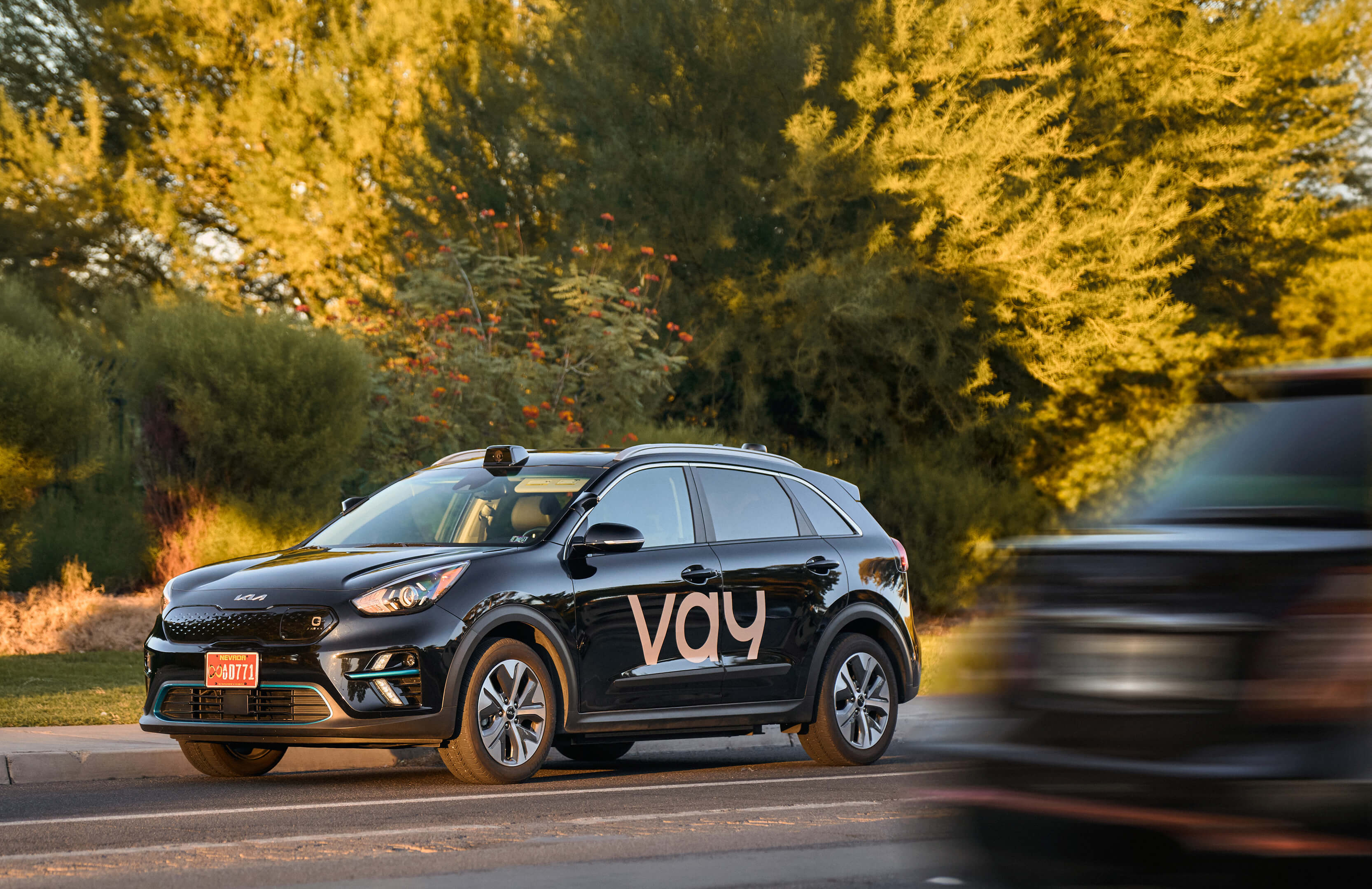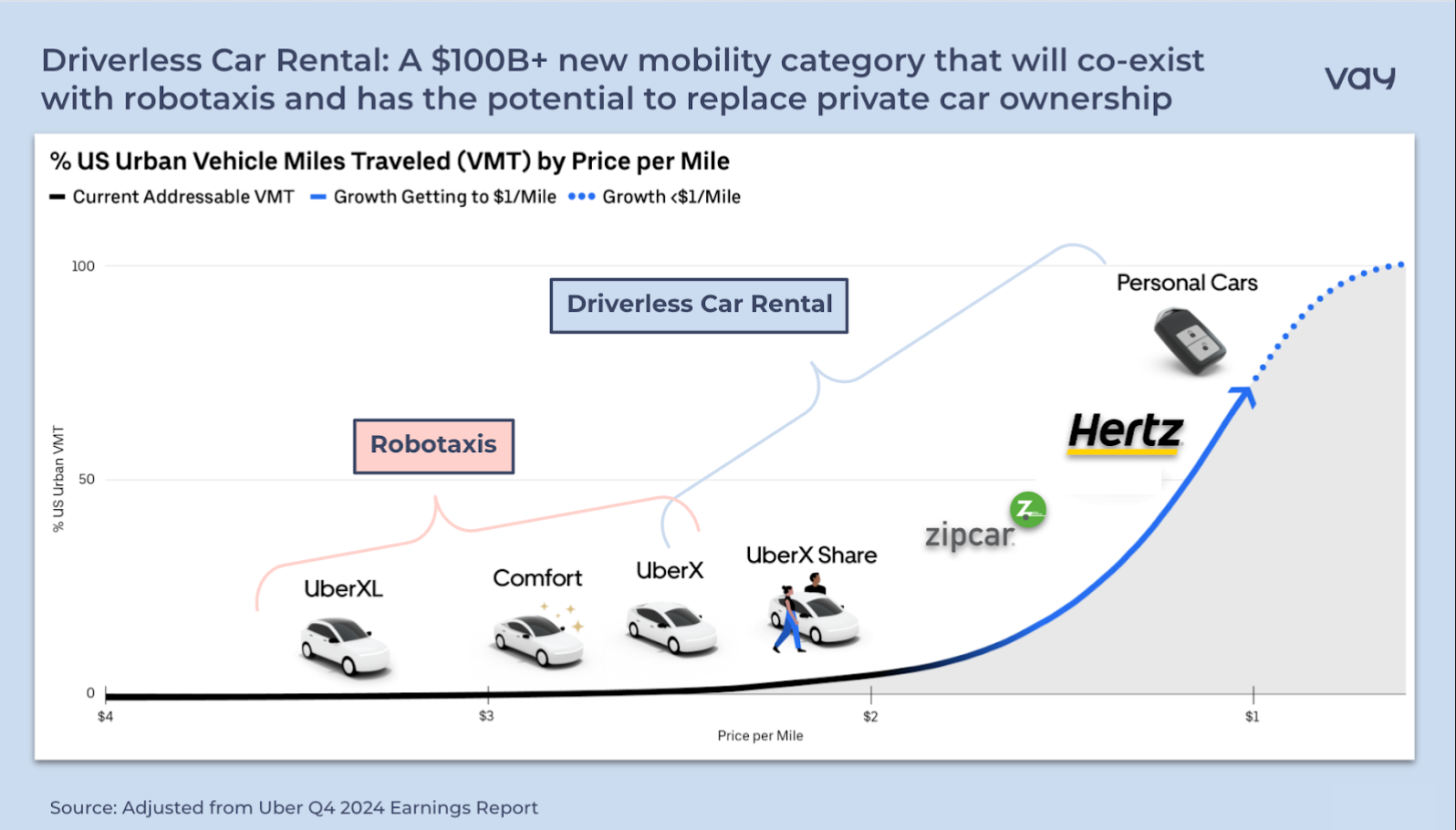Vay Community – I am often asked if remote driving is merely a bridge to full autonomy, which will become obsolete once robotaxis become mainstream. The truth? No, because driverless car rental and robotaxis will coexist for the foreseeable future.
Let me explain.
Hundreds of people are now using Vay’s remote driving door-to-door car rental in their daily routines—from commutes to filling in when their own car isn’t available. It’s proof that remote driving solves everyday moments and needs.
There’s also the human touch. One journalist admitted feeling uneasy about self-driving cars—until they heard a Remote Driver welcome them. That voice brought comfort and trust, something full autonomy still can’t offer.
And let’s talk flexibility. Parking in Las Vegas—like in any big city—can be a real headache. Between crowded lots and expensive garages, it’s easy to feel frustrated before the evening even begins.
That’s why we’ve introduced Driverless Parking as part of our ongoing effort to ease urban transportation challenges for local communities. Just end the rental in the app, hand control back to the Remote Driver within 30 seconds, and step out. No meters, no circling, no wasted time.

Now, how’s that different from robotaxis?
Robotaxis are fully autonomous vehicles that work a lot like ride-hailing apps—you get picked up and dropped off point-to-point. But there’s a catch: they’re still limited to small, tightly mapped service areas and ideal weather or traffic conditions. In contrast, services powered by remote driving are more flexible. Expanding a service area takes hours, not weeks, because there’s no need to build and maintain high-definition maps for every street.
But here’s the thing: robotaxis and driverless car rentals aren’t competing – they’re complementary. Robotaxis are great for short, spontaneous trips within a limited urban zone. Driverless car rentals are ideal for when you want more freedom: running errands, making multiple stops along the way, planning a a two-three hour trip to the beach or a full-day out of the city, or temporarily replacing your personal car without the burdens of ownership, insurance (especially in cities like Las Vegas, where insurance rates are skyrocketing), or maintenance.
Think of it as the difference between taking a cab and renting a car. Both have their place, depending on the job to be done.
Another difference is cost. Remote driving technology eliminates the need for expensive LiDAR systems, relying instead on four highly calibrated external cameras. This streamlined setup offers a significantly more affordable alternative to robotaxis. As a result, Vay’s car rental service costs roughly half as much as traditional ride-hailing or robotaxi options.
Take a look at the image below, which represents how driverless car rentals and robotaxis can coexist. Currently, robotaxis cost between $2.5 and $3.5 per mile, while car rental powered by remote driving can cost between $1 and $2 per mile.

Robotaxis may eventually become affordable as sensor and operational costs decline and their Operational Design Domains (ODDs) expand to include highways and more remote areas. McKinsey projects that the cost per mile of robotaxi travel will drop by 84%, from $8.18 per vehicle mile today to $1.32 per vehicle mile, but that is by 2035, a decade out. Furthermore, there is no certainty that this forecast will materialize—especially given the historical delays and challenges in autonomous vehicle development over the previous decade.
What is our plan for autonomy by 2035? At Vay, we see remote driving as a strategic enabler of autonomous technology—allowing us to take a pragmatic, step-by-step approach toward autonomy. We plan to gradually replace remote operations with autonomous driving features as they become technically viable.
This progression will begin with simpler use cases, such as highway driving and low-speed summoning. Unlike traditional robotaxis, our autonomy stack is designed to be cost-effective by relying mainly on cameras instead of expensive LiDAR systems. It is powered by high-quality, end-to-end remote driving data, forming the basis of what we refer to as “Autonomy 2.0” or “Embodied AI.”
But that, as they say, is a story for another time.
To conclude, remote driving is far more than a “bridge technology”. It establishes a new mobility category today with the potential to replace private car ownership at a fraction of the cost of traditional ride-hailing or robotaxis. Additionally, it enables a unique, step-by-step approach to the gradual deployment of autonomous vehicles by leveraging high-quality, end-to-end remote driving data for training.
Greetings,
Thomas von der Ohe
CEO & Co-Founder of Vay
Vay in the News
Check out latest coverage featuring Vay globally below.











